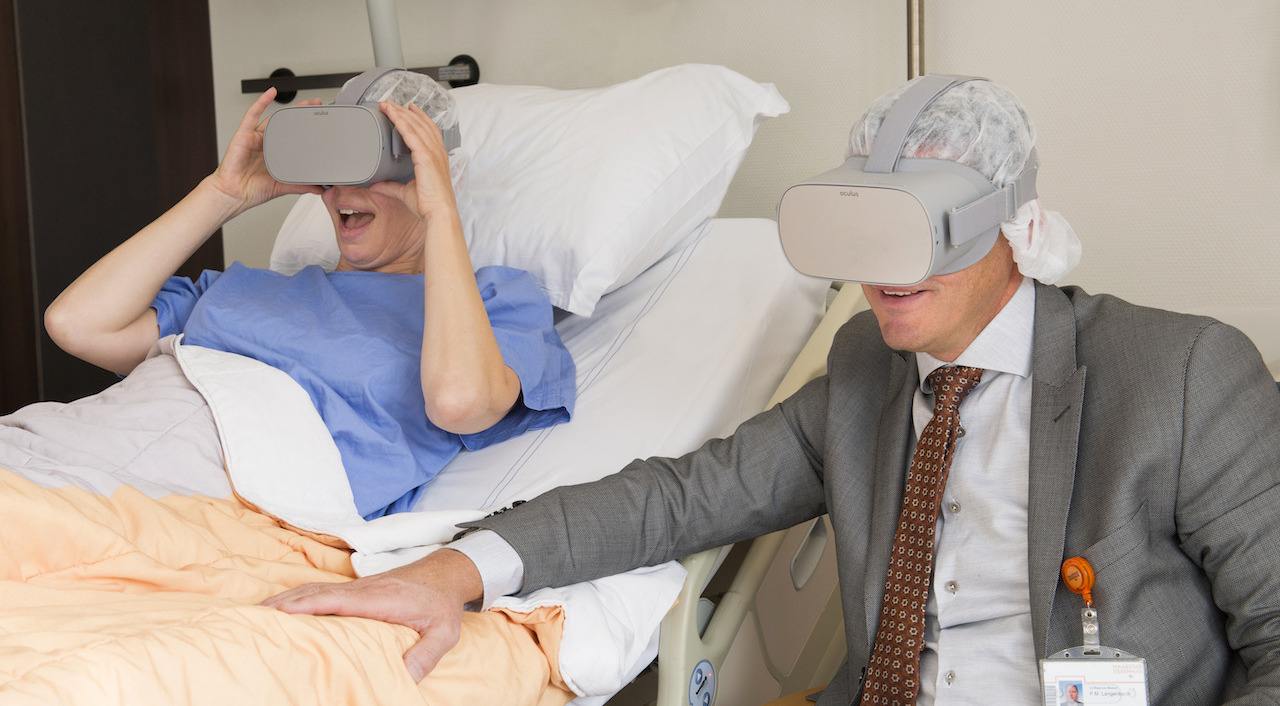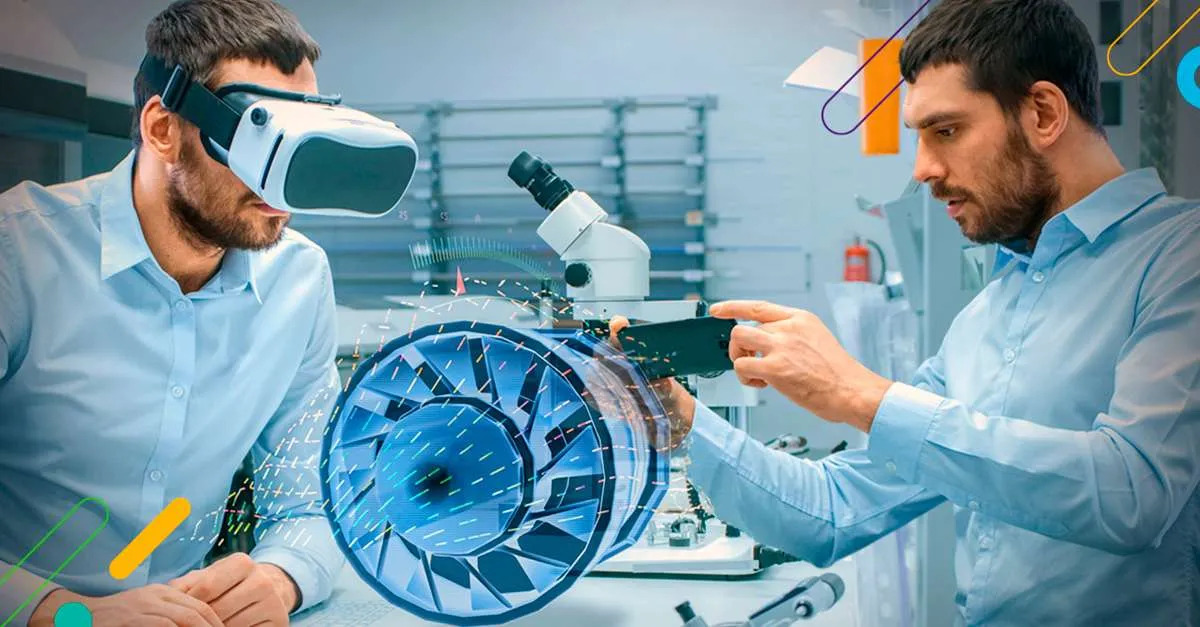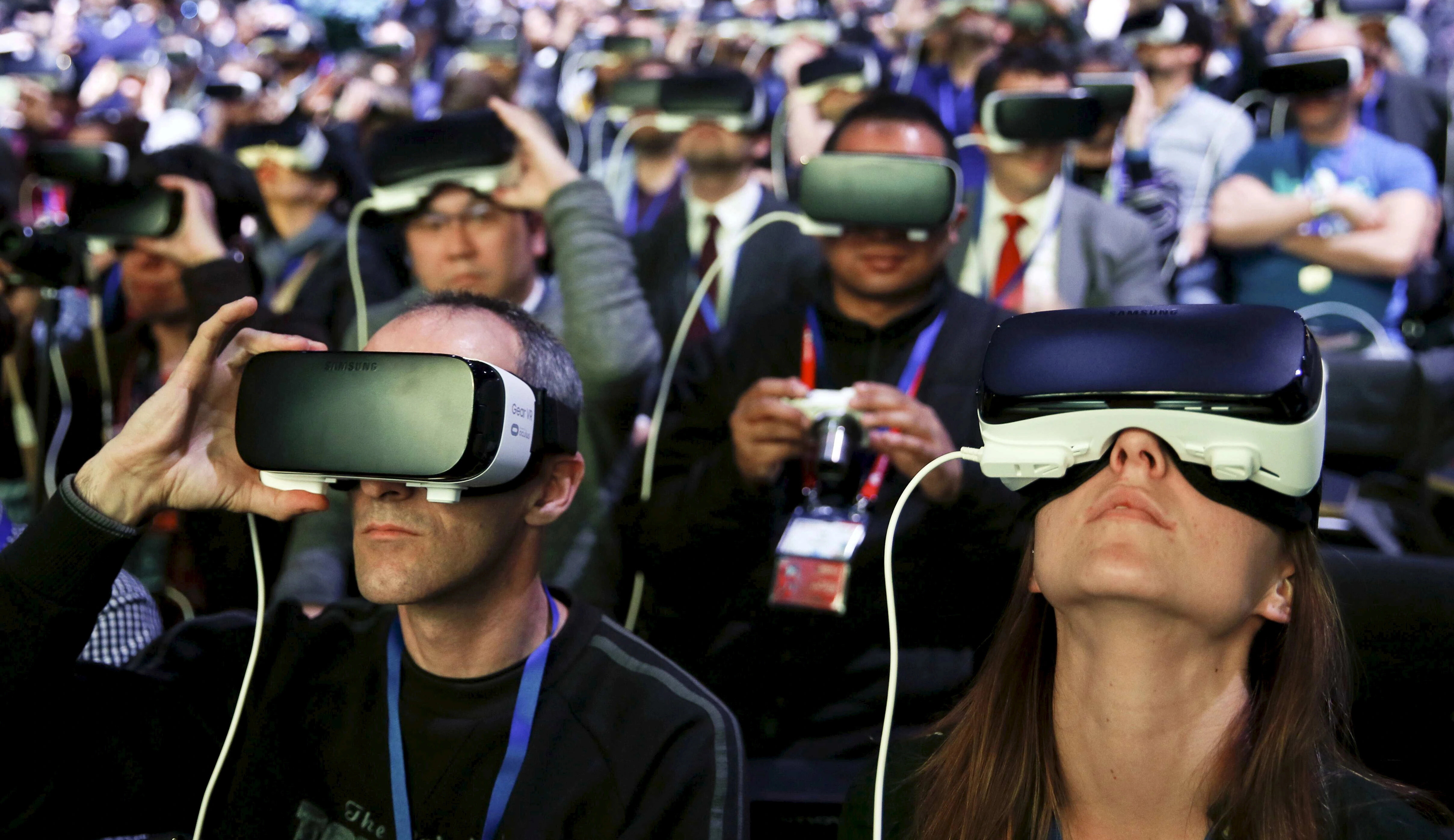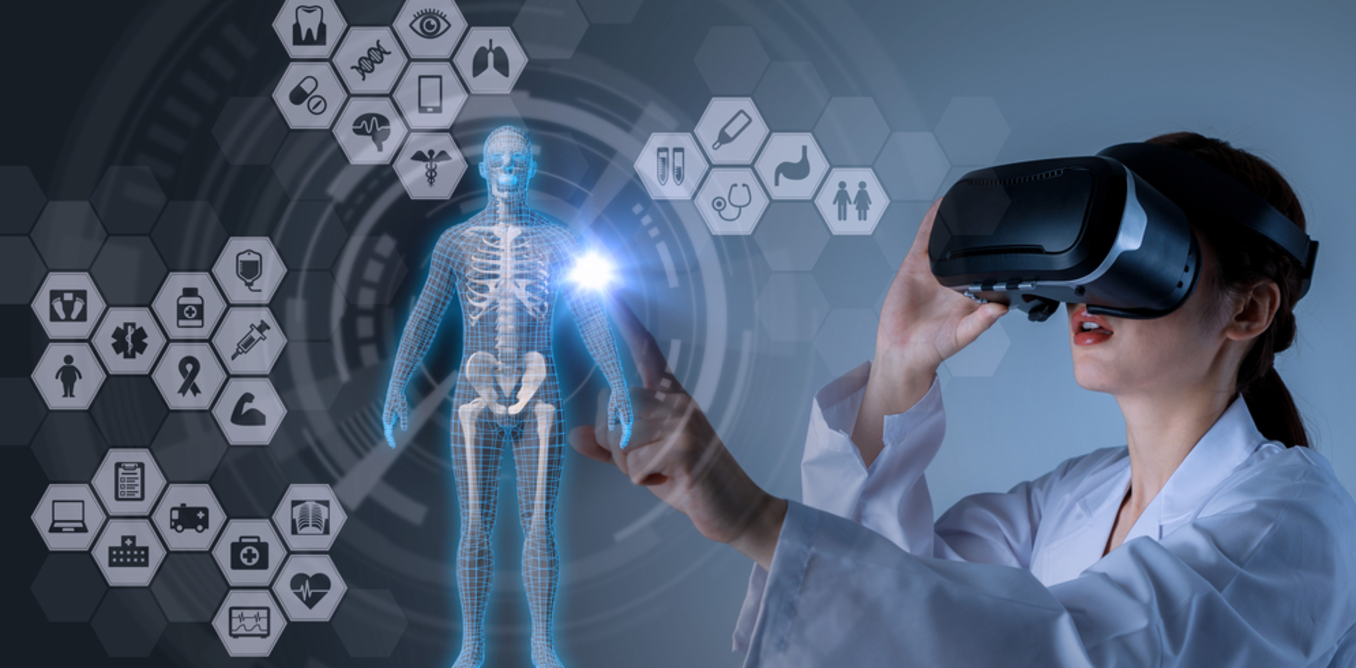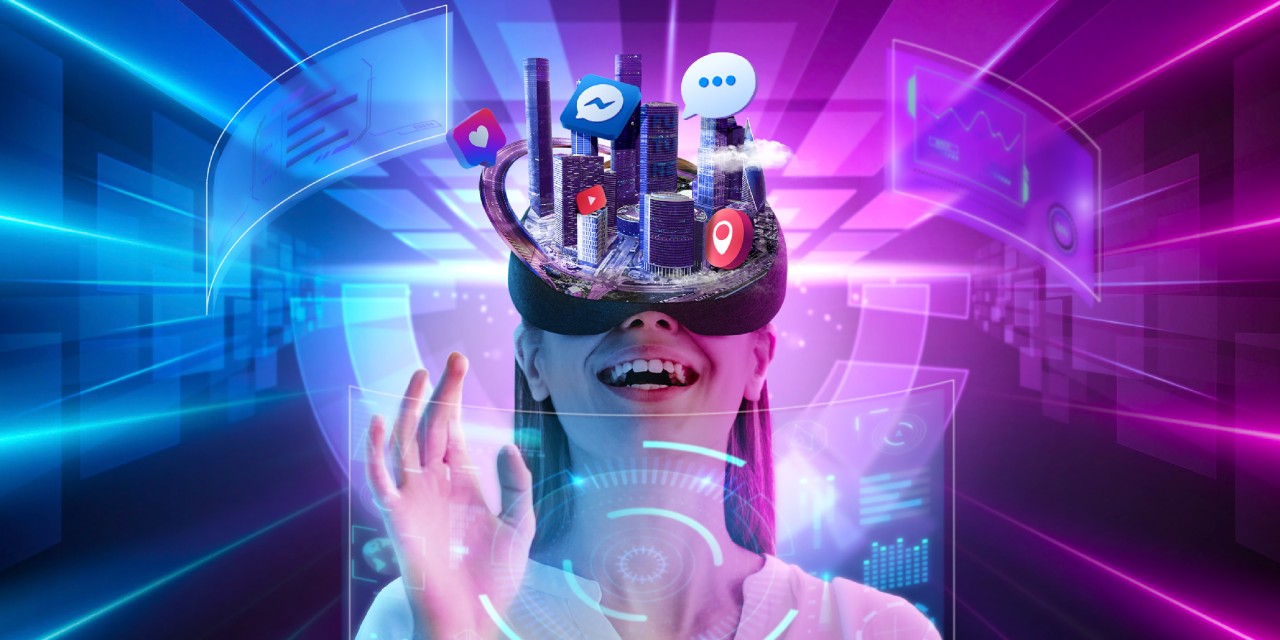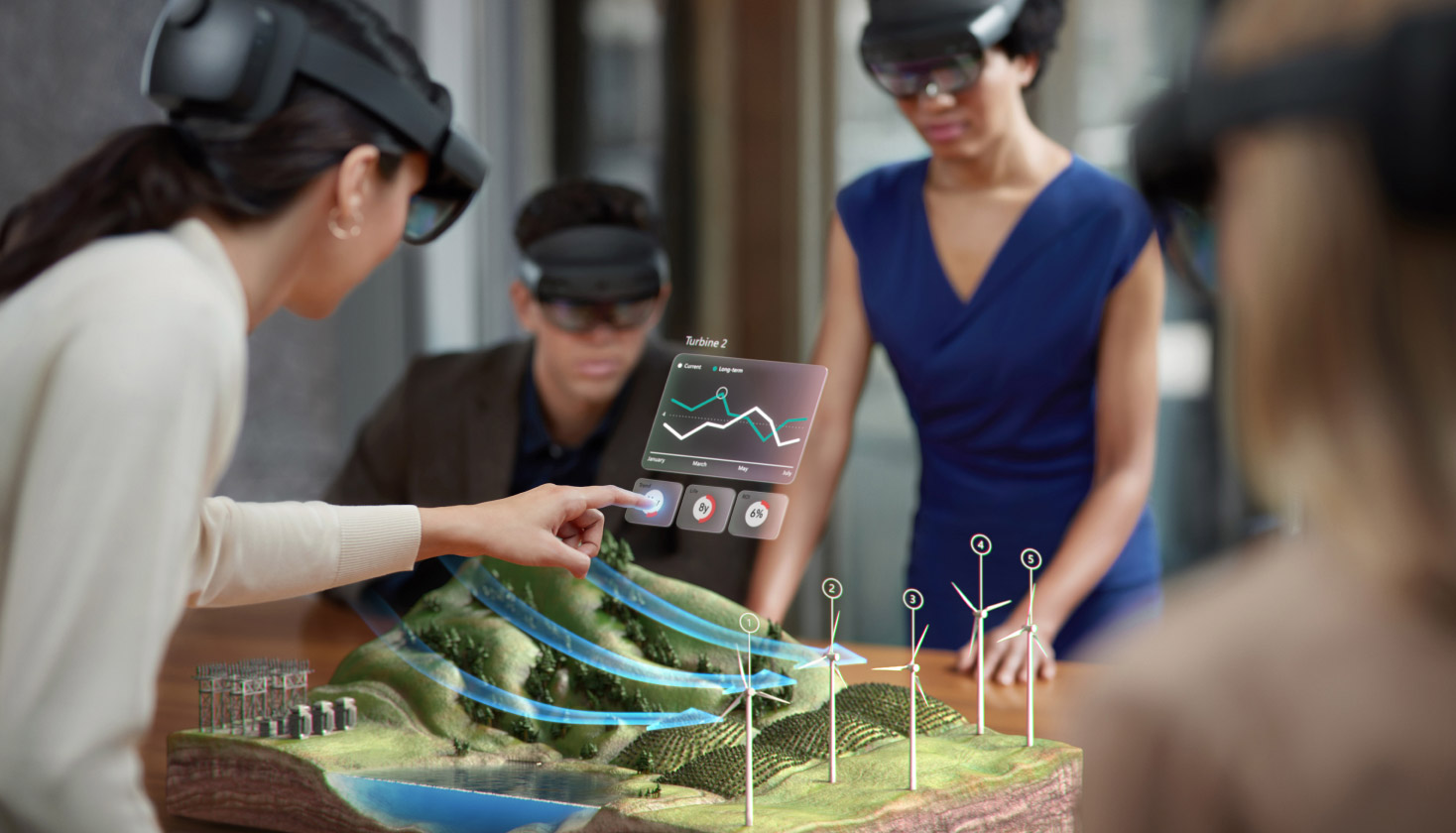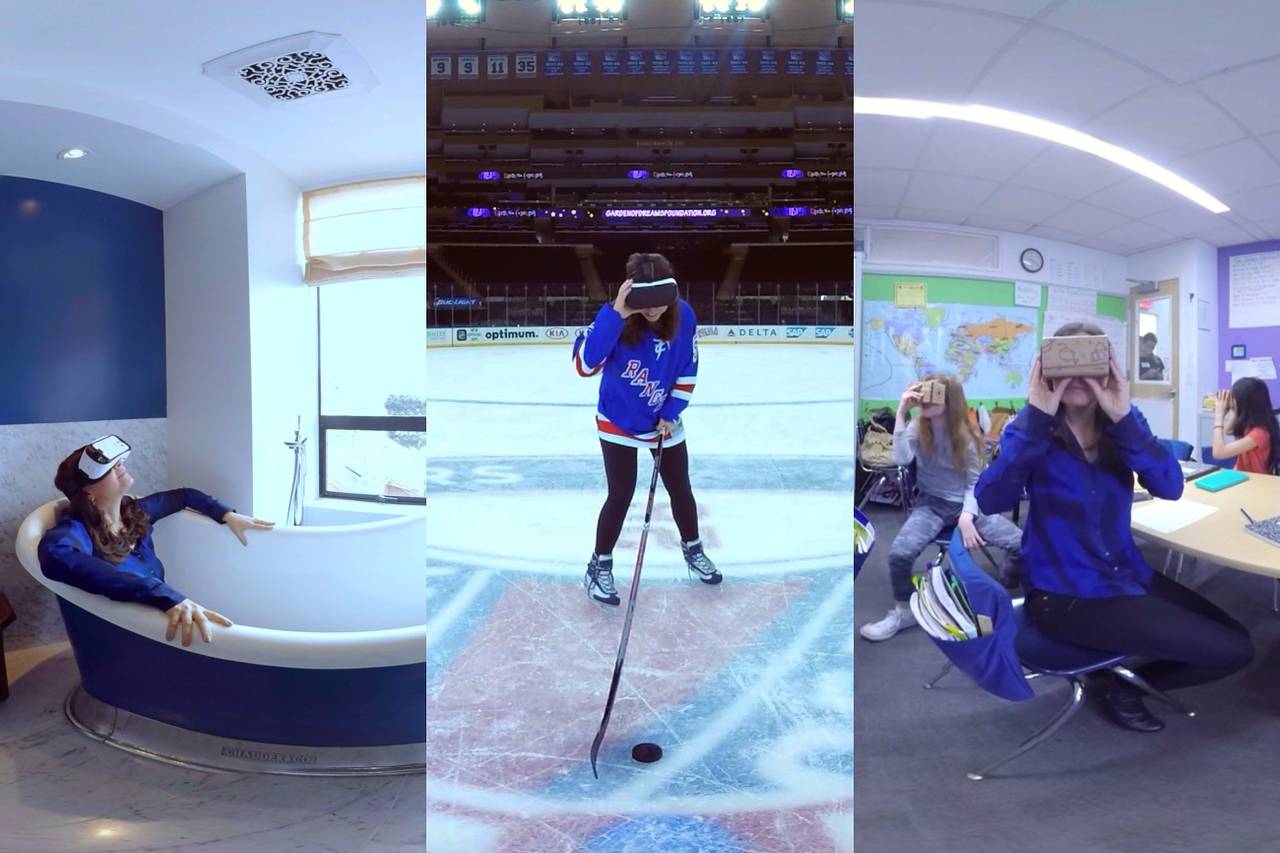Introduction
Virtual Reality (VR) is a revolutionary technology that has been making waves in various industries, including healthcare. By immersing individuals in a simulated environment, VR has the power to transport patients to different worlds, providing them with unique experiences and therapeutic benefits. In the realm of patient care, virtual reality has emerged as an innovative tool, offering a range of possibilities for improving healthcare outcomes and enhancing the overall patient experience.
With VR, healthcare professionals can create realistic scenarios that mirror real-life situations, allowing patients to engage in immersive experiences that go beyond their physical surroundings. Whether it’s reducing anxiety before a medical procedure, managing chronic pain, or facilitating rehabilitation, virtual reality has proven to be a valuable asset in the healthcare realm.
In this article, we will explore what virtual reality is, how it works in healthcare, the benefits it offers in patient care, and most importantly, what patients experience when they enter the virtual reality environment. From the immersive visuals and interactive scenarios to the emotional and physical effects, we will delve into the captivating world of virtual reality and its impact on patient well-being.
As virtual reality continues to evolve, it is important to understand and appreciate the unique experiences patients encounter when they step into this alternate reality. By harnessing the power of technology, healthcare providers can revolutionize the way they deliver care, creating a more holistic and patient-centered approach that addresses not only the physical aspects but also the psychological and emotional well-being of individuals. Through this exploration of the patient experience in the virtual reality environment, we can gain insights into the potential of this groundbreaking technology to transform healthcare as we know it.
What is Virtual Reality?
Virtual reality (VR) is an advanced technology that creates a simulated environment, immersing users in a three-dimensional, computer-generated world. It is achieved by wearing a specialized headset that tracks the user’s head movements, allowing them to explore and interact with the virtual environment in a highly realistic and immersive manner.
The key components of virtual reality are the display and the input devices. The display, typically in the form of a headset, provides a visual and auditory experience by presenting images and sound that mimic a real-world environment. The user can view the virtual environment in 360 degrees, making them feel as if they are physically present in that space.
Virtual reality also incorporates input devices such as hand controllers or motion sensors. These devices enable users to interact with objects and navigate through the virtual world, further enhancing the sense of presence and immersion.
The primary goal of virtual reality is to create a sense of presence, where users feel completely immersed in the virtual environment to the point where they forget about the physical world around them. This immersive experience replicates real-world scenarios and allows users to interact with the virtual surroundings as if they were interacting with objects and people in the physical world.
Virtual reality technology has rapidly advanced in recent years, with improvements in display resolution, motion tracking, and processing power. This has led to a more realistic and refined virtual experience, making it a game-changer in various industries, including healthcare.
By harnessing the power of virtual reality, healthcare professionals can create tailored environments for specific medical applications. Patients can be transported to different places, such as soothing natural landscapes, educational simulations, or even virtual medical procedures. The possibilities are endless, and virtual reality is opening up new doors in terms of patient care and treatment.
How Does Virtual Reality Work in Healthcare?
Virtual reality (VR) technology has gained significant traction in the healthcare industry, revolutionizing the way patients experience care and treatment. But how exactly does virtual reality work in healthcare?
The process begins with the creation of a virtual environment. Healthcare professionals, with the assistance of VR developers and designers, develop scenarios tailored to meet specific patient needs. These scenarios can range from anxiety reduction techniques to immersive simulations for medical training.
Once the virtual environment is created, patients don VR headsets, which consist of high-resolution screens and built-in sensors. These headsets track the movement of the patient’s head, allowing them to explore and interact with the virtual world in a way that feels natural and immersive.
In addition to headsets, VR experiences in healthcare may involve other sensory inputs. This can include wearable haptic devices that provide tactile feedback or motion controllers that allow patients to manipulate virtual objects.
The healthcare applications of virtual reality are diverse. In pain management, virtual reality can distract patients from acute or chronic pain by transporting them to tranquil and engaging virtual environments. For example, a patient undergoing a painful medical procedure may use VR to experience a serene beach scene, effectively diverting their attention and reducing discomfort.
Virtual reality is also proving to be a valuable tool in mental health treatment. Individuals suffering from anxiety disorders or phobias can participate in immersive exposure therapy, gradually confronting their fears in a controlled virtual environment. This exposure and desensitization approach can lead to reduced anxiety and improved mental well-being.
Furthermore, virtual reality is being utilized for medical training and education. Medical students can practice complex procedures in a realistic, risk-free environment, enhancing their skills and confidence before performing surgeries or treating patients. Virtual reality also offers opportunities for remote collaboration and consultation, allowing healthcare professionals to come together virtually to discuss cases and share expertise.
By leveraging the power of technology, virtual reality has the potential to improve outcomes in diverse healthcare settings. From pain management and mental health treatment to medical training and collaborative care, virtual reality is transforming the patient experience and enhancing the delivery of healthcare services.
Benefits of Using Virtual Reality in Patient Care
Virtual reality (VR) has emerged as a powerful tool in healthcare, providing numerous benefits in patient care and treatment. The immersive and interactive nature of virtual reality offers unique advantages that can enhance the overall patient experience and improve healthcare outcomes.
One of the primary benefits of using virtual reality in patient care is its ability to reduce anxiety and pain. By transporting patients to calming and engaging virtual environments, VR can distract their attention from medical procedures or chronic pain, helping to alleviate anxiety and discomfort. Studies have shown that virtual reality can significantly decrease pain levels and anxiety, making it a valuable tool in pain management and psychological therapy.
Virtual reality also offers an opportunity for therapeutic rehabilitation. Patients recovering from injuries or surgeries can engage in virtual scenarios that allow them to practice movements and exercises in a controlled and supportive environment. This helps to improve motor skills, coordination, and balance while reducing the risk of re-injury. Additionally, virtual reality can provide a sense of achievement and motivation, enhancing the rehabilitation process.
Another benefit of virtual reality in patient care is its cost-effectiveness and accessibility. Virtual reality technology has become more affordable and user-friendly, making it a viable option for healthcare institutions of various sizes. Patients can also access virtual reality experiences remotely, reducing the need for frequent hospital visits and allowing for more convenient care delivery.
In medical training and education, virtual reality offers significant advantages. Medical students and healthcare professionals can practice complex procedures and scenarios in a safe and realistic environment, without the risk of harm to patients. This hands-on training improves skills, confidence, and decision-making, ultimately enhancing the quality of care provided.
Furthermore, virtual reality has the potential to enhance patient engagement and autonomy in their healthcare journey. By involving patients in their own virtual experiences and treatment plans, they become active participants in their care, which can lead to greater motivation, compliance, and overall satisfaction with the healthcare process.
Overall, the benefits of using virtual reality in patient care are vast. From reducing anxiety and pain to facilitating rehabilitation and improving training, virtual reality has the potential to transform healthcare by offering innovative and effective solutions that enhance patient outcomes and experiences.
Examples of Virtual Reality Applications in Healthcare
Virtual reality (VR) technology has found numerous applications in healthcare, revolutionizing the way patients are treated and cared for. Let’s explore some examples of how virtual reality is being used in the healthcare industry.
1. Pain Management: Virtual reality has proven to be effective in reducing pain, particularly in patients undergoing painful medical procedures or dealing with chronic pain. By immersing patients in calming and distracting virtual environments, VR helps to divert their attention from the pain, resulting in reduced pain perception and improved comfort.
2. Mental Health Treatment: Virtual reality provides powerful tools for the treatment of various mental health conditions, such as anxiety disorders, phobias, and post-traumatic stress disorder (PTSD). Through exposure therapy, patients can confront their fears and anxieties in a controlled virtual environment, gradually desensitizing themselves and reducing symptoms.
3. Surgical Simulation: Virtual reality offers a realistic and immersive platform for surgical training and simulation. Surgeons can practice complex procedures in a virtual environment, improving their skills and decision-making abilities before operating on real patients. VR simulations also enable surgeons to learn new techniques and enhance their expertise.
4. Rehabilitation: Virtual reality is being utilized in physical therapy and rehabilitation to improve mobility and functional outcomes. Patients recovering from injuries or surgeries can engage in virtual scenarios that mimic real-life situations, allowing them to practice movements and exercises in a safe and controlled environment. This promotes faster recovery and enhances motor skills.
5. Anxiety Reduction: Virtual reality is used to reduce anxiety in patients with anxiety disorders or those facing stressful medical procedures. By creating immersive and calming environments, VR helps patients relax and distract themselves from anxiety-inducing situations, improving their overall experience and well-being.
6. Medical Education and Training: Virtual reality is transforming medical education by providing realistic and interactive training experiences. Medical students can practice procedures and scenarios in a virtual environment, gaining valuable hands-on experience without risking patient safety. This technology also enables remote learning and collaboration among healthcare professionals, facilitating knowledge sharing and expertise.
7. Chronic Disease Management: Virtual reality is being used to assist in the management of chronic diseases, such as diabetes and asthma. Patients can learn self-management techniques in an immersive virtual environment, acquiring skills to monitor their conditions, make informed decisions, and improve their overall quality of life.
These are just a few examples of how virtual reality is being applied in healthcare. As technology continues to advance, the potential for virtual reality in patient care is vast, offering innovative and effective solutions that improve outcomes and enhance the overall healthcare experience.
What Do Patients Experience in the Virtual Reality Environment?
Stepping into the virtual reality (VR) environment offers patients a unique and captivating experience that can profoundly impact their physical, mental, and emotional well-being. Let’s explore what patients can expect to experience when they enter the virtual reality world.
1. Immersive Visuals and Surroundings: Patients are immediately transported to a virtual world with stunning visuals and lifelike surroundings. Whether it’s exploring a tropical beach, walking through a bustling city, or delving into an educational simulation, the immersive visuals create a sense of presence and make patients feel as if they are physically present in the virtual environment.
2. Interactive Scenarios and Simulations: Virtual reality environments are often interactive, allowing patients to engage and interact with the virtual world. They can manipulate objects, complete tasks, and participate in realistic scenarios that mimic real-life situations. This interactivity enhances the realism and engagement, leading to a more immersive experience.
3. Sensory Engagement and Exploration: Virtual reality engages multiple senses, creating a more immersive experience. Patients may hear the sounds of their virtual surroundings, feel vibrations or haptic feedback through specialized devices, and even smell or taste virtual stimuli in some cases. This multi-sensory engagement enhances the realism and makes the virtual experience more compelling.
4. Emotional and Psychological Effects: Virtual reality has the power to evoke various emotions and create psychological experiences. Patients may feel a sense of awe, wonder, or tranquility when exploring serene natural landscapes. It can also be used to expose patients to anxiety-provoking scenarios in a controlled manner for therapeutic purposes. The emotional and psychological effects of virtual reality can be powerful and contribute to the overall therapeutic benefit.
5. Physical Benefits and Rehabilitation Opportunities: For patients undergoing rehabilitation or physical therapy, virtual reality provides opportunities for movement and exercise in a virtual environment. They can engage in activities that mimic real-life situations, helping to improve mobility, range of motion, and overall physical function. Virtual reality provides a safe and controlled space for patients to practice movements and engage in rehabilitation exercises.
Overall, patients can expect a truly immersive and transformative experience within the virtual reality environment. From the stunning visuals and interactive scenarios to the engagement of multiple senses and the potential for emotional and physical benefits, the virtual reality experience offers patients a unique and powerful tool for their healthcare journey.
Immersive Visuals and Surroundings
One of the key elements that make the virtual reality (VR) experience truly captivating is the immersive visuals and surroundings. When patients step into the virtual reality environment, they are transported to a world filled with stunning visuals and lifelike surroundings that create a sense of presence and immersion.
Virtual reality environments are carefully designed to mimic real-world locations or scenarios, providing patients with a truly realistic and engaging experience. Whether it’s exploring a tranquil beach, walking through a bustling city, or venturing into a mystical forest, the visual representation in virtual reality is incredibly immersive, making patients feel as if they are physically present in the virtual environment.
The quality of the visuals in virtual reality has drastically improved in recent years. High-resolution displays and advanced graphics technology ensure that the virtual reality experience is crisp, detailed, and visually appealing. Patients can see every intricate detail of their virtual surroundings, from the textures of objects to the play of light and shadow. This level of visual fidelity helps create a convincing and immersive environment.
Moreover, virtual reality allows patients to experience places and scenarios that may be otherwise inaccessible or challenging to reach. Patients who are bedridden or have limited mobility can explore new environments and engage in rich experiences through virtual reality. This can have a profound impact on their well-being, offering them the chance to “travel” to places they may never have the opportunity to visit in reality.
In addition to static visuals, virtual reality environments can also incorporate dynamic elements and interactive features. Patients may encounter moving objects, changing weather conditions, or realistic physics simulations, all of which enhance the authenticity of the virtual experience.
The immersive visuals and surroundings in virtual reality also play a crucial role in the therapeutic aspect of patient care. By creating visually engaging and calming environments, virtual reality can help reduce stress, anxiety, and even pain. Imagery of serene landscapes, tranquil waterfalls, or peaceful gardens can have a soothing effect on patients, promoting relaxation and well-being.
Through specialized headsets and screens, virtual reality provides patients with a visually immersive experience that goes beyond what can be achieved through traditional media. This immersive and visually compelling aspect of virtual reality enhances the overall patient experience, making healthcare interventions more engaging, enjoyable, and therapeutically effective.
Interactive Scenarios and Simulations
One of the key features of the virtual reality (VR) experience in healthcare is the ability to engage patients in interactive scenarios and simulations. Virtual reality allows patients to actively participate and interact with the virtual environment, creating a more immersive and engaging experience.
Virtual reality scenarios are carefully designed to replicate real-life situations and experiences. Patients can engage in interactive activities, manipulate objects, and even complete tasks within the virtual environment. These interactive elements foster a sense of agency and involvement, making the virtual experience feel more realistic and engaging.
For example, virtual reality can be used to simulate laboratory procedures or medical simulations, allowing medical students and healthcare professionals to practice and refine their skills in a safe and controlled environment. This interactive aspect of virtual reality training enhances the acquisition and retention of knowledge and promotes skill development without the risks associated with real-life scenarios.
In addition to medical training, virtual reality can also be used for patient education and self-management. Patients can interact with virtual representations of their own anatomy, learning about their medical conditions and treatment options. This interactive approach to patient education enhances understanding and allows patients to take a more active role in managing their healthcare.
Furthermore, virtual reality provides opportunities for patients to engage in scenarios and simulations that may not be possible in the physical world. They can participate in educational experiences such as exploring the human body at a cellular level, traveling through the bloodstream, or journeying inside the human brain. These interactive scenarios enhance learning and provide a unique perspective that would be impossible to achieve through traditional educational methods.
Virtual reality can also create interactive scenarios for therapeutic purposes. Patients with anxiety disorders or phobias can gradually expose themselves to anxiety-inducing situations in a controlled virtual environment. This exposure therapy helps patients confront their fears in a safe and supportive setting, leading to reduced anxiety and improved well-being.
The interactive nature of virtual reality scenarios offers patients a sense of engagement, empowerment, and immersion. By actively participating and interacting within the virtual environment, patients become more invested in their healthcare journey, leading to increased motivation, better treatment outcomes, and a deeper understanding of their conditions.
Through interactive scenarios and simulations, virtual reality in healthcare goes beyond passive observation and creates a dynamic and engaging experience that can enhance education, skill development, and therapeutic interventions. This interactive aspect of virtual reality makes it a powerful tool in patient care and treatment.
Sensory Engagement and Exploration
Virtual reality (VR) offers patients a truly immersive and multi-sensory experience, engaging their senses and igniting their imagination. Through virtual reality, patients can explore different environments, engage with virtual objects, and experience a range of sensory inputs that create a realistic and captivating experience.
One of the key aspects of virtual reality is its ability to engage multiple senses simultaneously, beyond just visual and auditory inputs. By incorporating haptic feedback devices, patients can experience tactile sensations, such as vibrations, pressure, or texture, when they interact with virtual objects. This haptic feedback enhances the sense of realism and immersion, making the virtual experience more authentic and engaging.
Virtual reality can also include auditory cues and spatial sound, allowing patients to hear the virtual environment around them. The sounds of birds chirping, waves crashing, or people talking contribute to the immersive experience, adding another layer of realism and depth to the virtual world.
Furthermore, virtual reality is evolving to engage other senses, such as taste and smell. Although still in its early stages, there are ongoing research and development to incorporate these senses into the virtual experience. For example, virtual reality can stimulate smell receptors to create scents associated with specific environments, such as the smell of fresh flowers in a virtual garden or the aroma of a delicious meal in a virtual kitchen.
The sensory engagement in virtual reality allows patients to explore environments and engage with objects in ways that would not be possible in the physical world. They can reach out and touch objects, feel the weight or texture of virtual items, and even experience the sensation of moving through the virtual environment.
This sensory engagement contributes to a more immersive and realistic experience that triggers emotional responses and creates a deeper connection with the virtual environment. Patients may feel a sense of awe, wonder, or relaxation as they explore virtual landscapes, interact with virtual objects, or engage in therapeutic activities within the virtual reality environment.
Moreover, sensory engagement in virtual reality extends beyond mere observation. Patients become active participants, using their senses to explore, discover, and interact with the virtual world. This active engagement enhances the therapeutic effects of virtual reality, making it an immersive and powerful tool for various healthcare applications.
Through sensory engagement and exploration, virtual reality provides patients with a multi-sensory experience that goes beyond visual and auditory stimulation. By engaging multiple senses and allowing patients to actively interact with the virtual environment, virtual reality creates a profoundly immersive and transformative experience that has the potential to positively impact patient well-being and healthcare outcomes.
Emotional and Psychological Effects
Virtual reality (VR) has the power to evoke a range of emotional and psychological effects, creating a profound impact on patients’ mental well-being. By immersing individuals in virtual environments and engaging their senses, virtual reality can elicit emotional responses and provide therapeutic benefits that can enhance the overall patient experience.
One of the emotional effects of virtual reality is a sense of awe and wonder. Patients who step into virtual environments that simulate breathtaking natural landscapes, ancient ruins, or other awe-inspiring scenes may experience a deep sense of appreciation and amazement. This can be extremely uplifting and have a positive effect on mental well-being.
Virtual reality can also evoke a sense of tranquility and calmness. Patients can be transported to serene beaches, peaceful gardens, or soothing natural settings, providing them with an escape from the stressors of daily life. This immersion in a tranquil environment can promote relaxation, reduce anxiety, and improve overall emotional well-being.
Furthermore, virtual reality can be used to elicit specific emotions for therapeutic purposes. For example, exposure therapy in virtual reality allows patients with anxiety disorders or phobias to confront their fears in a controlled environment. By gradually exposing patients to anxiety-inducing situations, virtual reality helps them desensitize and reduce anxiety over time, promoting emotional resilience and improved mental health.
Virtual reality can also have a profound impact on empathy and compassion. Virtual reality simulations can place individuals in the shoes of others, allowing them to experience different perspectives and foster empathy. This can be especially valuable in healthcare, as it helps healthcare professionals develop a deeper understanding of patients’ experiences and builds more compassionate care.
Moreover, virtual reality experiences can stimulate the release of endorphins, dopamine, and other feel-good chemicals in the brain. This can boost mood and create a sense of happiness and well-being. Patients may experience a greater sense of joy, excitement, or satisfaction as they engage with the virtual environment and accomplish goals within the simulations.
Virtual reality can also have psychological effects beyond emotions. It can provide patients with a sense of control and agency, allowing them to actively participate in their healthcare journey. This sense of empowerment can lead to increased motivation, adherence to treatment plans, and a stronger sense of autonomy.
The emotional and psychological effects of virtual reality in healthcare play a significant role in enhancing the overall patient experience and improving treatment outcomes. By creating immersive and emotionally engaging environments, virtual reality has the potential to positively impact patients’ mental well-being, promote emotional resilience, and contribute to a more holistic and patient-centered approach to healthcare.
Physical Benefits and Rehabilitation Opportunities
Virtual reality (VR) offers unique opportunities for physical benefits and rehabilitation in healthcare. By creating virtual environments and simulations, patients can engage in activities that promote physical well-being and support the rehabilitation process.
One of the key physical benefits of virtual reality is the ability to facilitate rehabilitation and improve functional outcomes. Patients recovering from injuries or surgeries can participate in virtual scenarios that allow them to practice movements and exercises in a controlled and supportive environment. Virtual reality provides a safe space for patients to work on their mobility, balance, and coordination, accelerating the rehabilitation process.
Virtual reality can also provide a platform for targeted physical therapy. Patients with specific conditions, such as stroke or Parkinson’s disease, can engage in activities designed to improve specific motor skills. Virtual reality simulations can challenge patients to perform actions that promote range of motion, strength, and coordination, helping them regain lost abilities and improve overall physical function.
The gamification aspect of virtual reality can make physical therapy more engaging and enjoyable. By turning exercises and movements into interactive games or challenges, patients are motivated to participate more actively in their therapy sessions. This increased enjoyment and engagement can lead to improved compliance and better outcomes in physical rehabilitation.
In addition to rehabilitation, virtual reality can also contribute to physical fitness and well-being. Virtual reality experiences that involve physical activity, such as dance games or virtual sports, can provide a fun and immersive way to engage in exercise. This can be particularly appealing to individuals who may find traditional exercise routines monotonous or challenging.
Furthermore, virtual reality allows patients to engage in physical activities that would otherwise be impossible or inaccessible. Individuals with mobility limitations can virtually explore outdoor environments, hike through world-renowned trails, or participate in recreational activities they may not be able to experience in-person. These virtual experiences promote a sense of adventure, freedom, and physical engagement.
Research has also shown that virtual reality can provide pain relief during physical therapy or medical procedures. By immersing patients in soothing and distraction-inducing virtual environments, virtual reality can reduce the perception of pain, allowing patients to engage more fully in their rehabilitation exercises or medical procedures.
Overall, virtual reality offers a range of physical benefits and rehabilitation opportunities in healthcare. By providing a controlled and immersive environment for movement and exercise, virtual reality can enhance physical rehabilitation, improve motor skills, and promote overall physical well-being.
Conclusion
Virtual reality (VR) has emerged as a groundbreaking technology in healthcare, offering transformative possibilities for patient care, treatment, and well-being. The immersive and interactive nature of virtual reality creates unique experiences that have the potential to improve outcomes, enhance the patient experience, and revolutionize the way healthcare is delivered.
Through immersive visuals and surroundings, virtual reality transports patients to different worlds, providing them with a sense of presence and immersion. From serene natural landscapes to bustling cityscapes, virtual reality creates visually captivating environments that engage patients’ senses and captivate their imagination.
The interactive scenarios and simulations in virtual reality empower patients to actively participate in their healthcare journey. Through virtual reality, patients can engage with objects, complete tasks, and practice skills in a safe and controlled environment. This interactive aspect enhances the therapeutic benefits and promotes engagement, motivation, and empowerment.
Furthermore, virtual reality offers sensory engagement and exploration, stimulating multiple senses and providing patients with a truly immersive experience. Through haptic feedback, auditory cues, and even the potential for smell and taste, virtual reality creates a multi-sensory environment that enhances realism and contributes to emotional and therapeutic effects.
There are numerous benefits of virtual reality in patient care, including pain management, mental health treatment, surgical simulation, rehabilitation, and patient education. Virtual reality reduces pain and anxiety, provides safe training opportunities, enhances rehabilitation outcomes, and promotes patient understanding and self-management.
Virtual reality also has profound emotional and psychological effects, evoking awe, tranquility, and empathy. It has the potential to reduce anxiety, promote relaxation, and improve mental well-being. The gamification aspect of virtual reality makes therapy and rehabilitation more enjoyable, fostering engagement and promoting physical well-being.
In conclusion, virtual reality holds tremendous potential in revolutionizing healthcare. By leveraging immersive visuals, interactive scenarios, sensory engagement, and therapeutic opportunities, virtual reality enhances patient outcomes and experiences. As technology continues to advance, virtual reality will undoubtedly play an increasingly integral role in patient care, offering innovative and effective solutions that truly transform the healthcare landscape.







